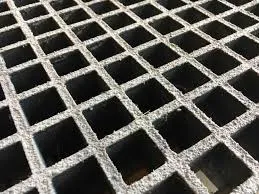
-
 Afrikaans
Afrikaans -
 Albanian
Albanian -
 Amharic
Amharic -
 Arabic
Arabic -
 Armenian
Armenian -
 Azerbaijani
Azerbaijani -
 Basque
Basque -
 Belarusian
Belarusian -
 Bengali
Bengali -
 Bosnian
Bosnian -
 Bulgarian
Bulgarian -
 Catalan
Catalan -
 Cebuano
Cebuano -
 China
China -
 China (Taiwan)
China (Taiwan) -
 Corsican
Corsican -
 Croatian
Croatian -
 Czech
Czech -
 Danish
Danish -
 Dutch
Dutch -
 English
English -
 Esperanto
Esperanto -
 Estonian
Estonian -
 Finnish
Finnish -
 French
French -
 Frisian
Frisian -
 Galician
Galician -
 Georgian
Georgian -
 German
German -
 Greek
Greek -
 Gujarati
Gujarati -
 Haitian Creole
Haitian Creole -
 hausa
hausa -
 hawaiian
hawaiian -
 Hebrew
Hebrew -
 Hindi
Hindi -
 Miao
Miao -
 Hungarian
Hungarian -
 Icelandic
Icelandic -
 igbo
igbo -
 Indonesian
Indonesian -
 irish
irish -
 Italian
Italian -
 Japanese
Japanese -
 Javanese
Javanese -
 Kannada
Kannada -
 kazakh
kazakh -
 Khmer
Khmer -
 Rwandese
Rwandese -
 Korean
Korean -
 Kurdish
Kurdish -
 Kyrgyz
Kyrgyz -
 Lao
Lao -
 Latin
Latin -
 Latvian
Latvian -
 Lithuanian
Lithuanian -
 Luxembourgish
Luxembourgish -
 Macedonian
Macedonian -
 Malgashi
Malgashi -
 Malay
Malay -
 Malayalam
Malayalam -
 Maltese
Maltese -
 Maori
Maori -
 Marathi
Marathi -
 Mongolian
Mongolian -
 Myanmar
Myanmar -
 Nepali
Nepali -
 Norwegian
Norwegian -
 Norwegian
Norwegian -
 Occitan
Occitan -
 Pashto
Pashto -
 Persian
Persian -
 Polish
Polish -
 Portuguese
Portuguese -
 Punjabi
Punjabi -
 Romanian
Romanian -
 Russian
Russian -
 Samoan
Samoan -
 Scottish Gaelic
Scottish Gaelic -
 Serbian
Serbian -
 Sesotho
Sesotho -
 Shona
Shona -
 Sindhi
Sindhi -
 Sinhala
Sinhala -
 Slovak
Slovak -
 Slovenian
Slovenian -
 Somali
Somali -
 Spanish
Spanish -
 Sundanese
Sundanese -
 Swahili
Swahili -
 Swedish
Swedish -
 Tagalog
Tagalog -
 Tajik
Tajik -
 Tamil
Tamil -
 Tatar
Tatar -
 Telugu
Telugu -
 Thai
Thai -
 Turkish
Turkish -
 Turkmen
Turkmen -
 Ukrainian
Ukrainian -
 Urdu
Urdu -
 Uighur
Uighur -
 Uzbek
Uzbek -
 Vietnamese
Vietnamese -
 Welsh
Welsh -
 Bantu
Bantu -
 Yiddish
Yiddish -
 Yoruba
Yoruba -
 Zulu
Zulu
grp fitting
The Significance of GRP Fitting in Modern Applications
GRP fitting, or Glass Reinforced Plastic fitting, has gained considerable attention in various industries due to its exceptional properties and versatility. This composite material, made of plastic reinforced with glass fibers, offers a combination of lightweight design, durability, and resistance to environmental factors. The applications of GRP fittings extend across sectors such as construction, plumbing, electrical, and even aerospace, making it a significant component in modern engineering solutions.
Advantages of GRP Fitting
One of the most significant advantages of GRP fittings is their lightweight nature. Compared to traditional materials like metal or concrete, GRP fittings are incredibly light, which simplifies transportation and installation. This quality is particularly beneficial in applications where weight limitations are critical, such as in the construction of bridges, pipelines, and other infrastructures.
In addition to being lightweight, GRP fittings also exhibit remarkable strength. The composite structure provides excellent tensile and compressive strength, making it suitable for high-pressure applications. This is especially useful in the plumbing and waterworks industries, where GRP fittings can endure harsh conditions and carry heavy loads without failing.
Another compelling feature of GRP fittings is their resistance to corrosion. Unlike metals that can rust and degrade over time, GRP is inherently resistant to a wide range of chemicals, environmental factors, and moisture. This quality makes GRP fittings ideal for use in marine environments, chemical processing plants, and wastewater treatment facilities, where exposure to corrosive substances is commonplace.
Applications of GRP Fitting
The widespread use of GRP fittings can be seen in numerous applications across various industries. In the construction sector, GRP is often utilized in the formation of pipes, tanks, and structural components. Its lightweight and durable nature allows for ease of handling and longevity, leading to reduced maintenance costs over time.
grp fitting

In the plumbing industry, GRP fittings are increasingly used for piping systems transporting water, chemicals, and other fluids. Their resistance to environmental degradation ensures that these systems remain operational for extended periods, providing a cost-effective solution for both industrial and residential plumbing needs.
Moreover, GRP fittings have significant applications in the electrical industry. They are commonly used to create enclosures and structural components that help protect electrical systems from environmental damage. The insulation properties of GRP also make it a suitable material for high-voltage applications.
The aerospace sector has also embraced GRP fittings due to their lightweight characteristics and ability to withstand extreme temperatures and pressures. Aircraft parts, including panels and structural components, increasingly utilize GRP to ensure efficiency and performance while minimizing weight.
Future Prospects
As industries continue to seek sustainable and efficient materials, the demand for GRP fittings is likely to rise. Advances in manufacturing technologies and techniques are enhancing the quality and performance of GRP composites, making them even more appealing for various applications. For instance, the incorporation of new resin systems and fiber technologies is leading to GRP materials that can withstand even more extreme conditions.
Additionally, rising environmental concerns and the push towards greener solutions are driving industries to replace traditional materials with GRP fittings that offer reduced carbon footprints and lower life-cycle costs. As businesses become more aware of the benefits of GRP fittings, applications are expected to expand into more sectors, including renewable energy and smart infrastructure developments.
Conclusion
In conclusion, the significance of GRP fittings can hardly be overstated. Their unique combination of lightweight, strength, and resistance to corrosion makes them an invaluable resource across numerous industries. As technology progresses, the potential for GRP fittings will continue to grow, paving the way for innovative applications that address modern engineering challenges. With an increasing shift towards sustainable practices, GRP fittings are poised to play a critical role in the future of construction, plumbing, energy, and beyond. The ongoing developments in this field promise a bright future for the utilization of glass reinforced plastic fittings, as they provide solutions that align with both economic and environmental goals.









